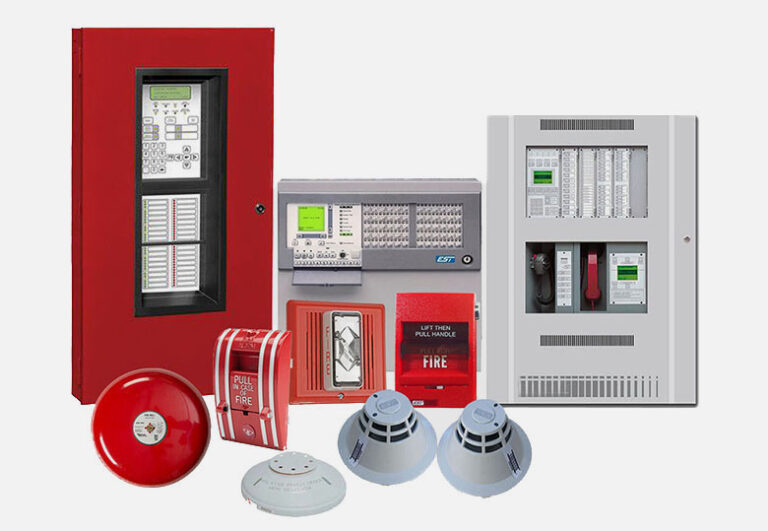Fire Alarm System
A Fire Alarm System is designed to detect and alert individuals to the presence of smoke, fire, or other fire-related emergencies. It includes sensors, detectors, alarms, and control panels to provide early warning, ensuring prompt evacuation and a swift response. Our systems are highly reliable, meeting all necessary safety standards to protect your property and lives effectively.

Our Service
Fire Alarm System
Our Fire Alarm System is a comprehensive safety solution consisting of multiple devices working together to detect and alert individuals to the presence of smoke, fire, carbon monoxide, or other emergencies. The system includes smoke and heat detectors, as well as manual activation devices such as pull stations. Once triggered, alarms can sound through motorized bells, wall-mounted sounders, horns, or speaker strobes that provide both audible alerts and evacuation instructions.
The system can be tailored to suit various building sizes, with volume adjustments for smaller or larger spaces. Depending on the system and manufacturer, alarms may sound as sirens with alternating frequencies, ensuring maximum attention in emergency situations. In larger buildings, the alarms may be set to higher volumes or specific codes, effectively guiding people to safety and preventing elevator use during a fire emergency.
Fire Alarm System Components
Our Fire Alarm Systems consist of various essential components working together to provide reliable fire detection and protection:
High Sensitive Standalone Smoke Detector: Detects smoke at a very early stage to alert occupants promptly.
Conventional Fire Alarm System: Traditional system using simple detection devices with fixed wiring.
Addressable Fire Alarm System: Advanced system where each device has a unique address for more precise detection and easier troubleshooting.
Fire Alarm Control Panel (FACP): The heart of the system, monitoring inputs, ensuring system integrity, and controlling outputs.
Secondary (Backup) Power Supplies: Provides emergency power during power failures, typically using sealed lead-acid batteries or generators.
Initiating Devices: Devices like pull stations, heat detectors, or smoke detectors that activate the system. These can include beam, photoelectric, aspiration, and duct types.
Building Safety Interfaces: Integrates with the building’s infrastructure to control air movement, lighting, and evacuation processes, helping to contain smoke and fire.
Each component is crucial for ensuring rapid response and safety in the event of a fire emergency.

